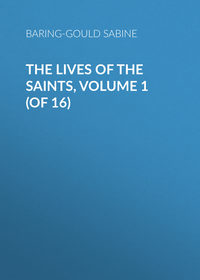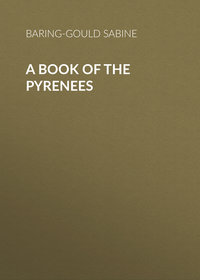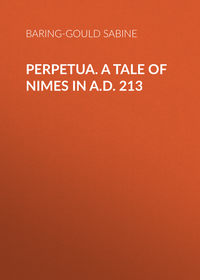 полная версия
полная версияA Book of Cornwall
CHAPTER V
TIN MINING
The granite eruptions in Devon and Cornwall-Elvans-Lodes-Tin passing into copper-Stream-tin-Story of S. Piran and S. Chigwidden-Dartmoor stream-tin-Joseph of Arimathea-The Cassiterides-Jutes-Danish incursions-Tin in King John's time-Richard, Earl of Cornwall-Elizabeth introduces German engineers-Stannary towns-Carew on mining-Blowing-houses-Miners' terms-Stannary Courts-Dr. Borlase on tin mining-Present state.
I remember being at a ball many years ago at that epoch in the development of woman when her "body" was hooked along her dorsal ridge. Now I learn from competent authorities that it is held together in other fashion.
There was at the ball a very lusty stout lady in slate-grey satin.
By nature and age, assisted by victuals, she was unadapted to take violent exercise. Nevertheless dance she would. Dance she did, till there ensued an explosion. Hooks, eyes, buttons, yielded, and there ensued an eruption of subjacent material. In places the fastenings held so that the tumescent under-garments foamed out at intervals in large bulging masses.
This is precisely what took place with Mother Earth in one of her gambols. Her slate panoply gave way, parted from N.E. to S.W., and out burst the granite, which had been kept under and was not intended for show.
Her hooks and eyes gave way first of all in South Devon, and out swelled the great mass of Dartmoor. They held for a little space, and then out broke another mass that constitutes the Bodmin moors. It heaved to the surface again north of S. Austell, then was held back as far as Redruth and Camborne. A few more hooks remained firm, and then the garment gave way for the Land's End district, and, finally, out of the sea it shows again in Scilly.
Or take it in another way. Cornwall is something like a leg. Let it be a leg vested in a grey stocking. That stocking has so many "potatoes" in it, and each "potato" is eruptive granite.
Granite, however, likewise cracked, formed "faults," as they are called, in parallel lines with the great parent crack to which it owed its appearance, and cracks also formed across these; and through the earlier cracks up gushed later granite in a molten condition, and these are dykes.
Moreover, the satin body not only gave way down its great line of cleavage, but the satin itself in places yielded, revealing, not now the under-linen which boiled out at the great faults, but some material which, I believe, was the lining. So when the granite broke forth there were subsidiary rifts in the slate, and through these rifts a material was extruded, not exactly granite, but like it, called elvan. These elvan dykes vary from a few feet to as many as four hundred in breadth, and many can be traced for several miles. The younger granite intruded into the older granite is also called elvan.
But when the secondary fissures occurred, the intrusive matter was not only a bastard granite, but with it came also tin and copper. And these metallic lines, which run on Dartmoor from E. to W., and in Cornwall from E.N.E. to W.S.W., are called lodes.
The cross-cracks do not contain metal. They are called cross-courses.
In addition there are some capricious veins that do not run in the normal direction, and these are called counter-lodes. Their usual direction is N.E.
The cross-courses, although without metal, are of considerable value to the miner, because, as he knows well, the best lodes are those which are thus traversed.
There is, however, one description of cross-course that is called floocan, and which is packed with clay, and holds back water. These are accordingly not cut through if it can possibly be avoided.
A very curious feature in the lodes is, that after going down to a variable depth the tin is replaced by copper.
Percy was the first to establish this, towards the close of last century. He pointed out that many an old tin mine was in his time worked for copper. And it came to be supposed that this would be found to be an unchanging law: Go deep enough after tin, and you come to copper. But this opinion was shaken when it was found that Dolcoath, the profoundest mine in Cornwall, which had for some time been worked for copper, became next rich in tin. What seems to have been the case was this: when a vent offered, there was a scramble between the two minerals which should get through first and out of the confinement under earth's crust, and now a little tin got ahead; then came copper trampling on its heels, but was itself tripped up by more tin.
Now, when the granite came to the surface, it did not have everything its own way, and hold its nose on high, and lord it over every other rock as being the most ancient of all, though not the earliest to put in an appearance. There was a considerable amount of water about. There is plenty and to spare in the west of England now, but we may feel grateful that we do not exist in such detestable weather, nor exposed to such sousing rains, nor have to stand against such deluges, as those which granite had to encounter. Hot, over-hot, it may have been below, but it was cold and horribly wet above.
The rains descended; the floods came, and beat on the granite, which, being perhaps at the time warm and soft, and being always very absorbent, began to dissolve.
As it dissolved, the water swept away all its component parts, and deposited the heaviest near at hand, and took the lightest far away. Now the heaviest of all were the ore from the veins or lodes, and the water swept this down into the valleys and left it there, but it carried off the dissolved feldspar and deposited it where it conveniently could and when it was tired of carrying it. The former is stream-tin; the latter is china clay.
Now to get at stream-tin very little trouble is needed. The rubble brought down and lodged in the valleys has to be turned over; and the ore is distinguishable by its weight and by a pink tinge, like the rouge ladies were wont (a hundred years ago) to put on their cheeks and lips. There is no tunnelling, no nasty shafts and adits to be made; and shafts and adits were beyond the capacity of primitive man, furnished with bone and oak picks only. Besides, why take the trouble to mine when the tin lay ready to be picked up?
The story told in Cornwall of the discovery of tin is this: -
S. Piran came over from Ireland in a coracle, and, like a prudent man, brought with him a bottle of whisky. On landing on the north coast he found that there was a hermit there named Chigwidden. The latter was quite agreeable to be friends with the new-comer, who was full of Irish tales, Irish blarney, and had, to boot, a bottle of Irish whisky. Who would not love a stranger under the circumstances? Brothers Chigwidden and Piran drank up the bottle.
"By dad," said Piran, "bothered if there be another dhrop to be squeezed out! Never mind, my spiritual brother; I'll show you how to distil the crayture. Pile me up some stones, and we'll get up the divil of a fire, and we shall manage to make enough to expel the deuce out of ould Cornwall."
So Chigwidden collected a number of black stones, and the two saints made a fine fire-when, lo! out of the black stones thus exposed to the heat ran a stream like liquid silver. Thus was tin discovered.
The story won't wash.
Tin was invented a thousand years at least before either Piran or Chigwidden were thought of. But that was most certainly the way in which it was revealed.
On Dartmoor the stream tin can thus be run out of the ore with a peat fire. And the Dartmoor stream tin has this merit: it is absolutely pure, whereas tin elsewhere is mingled with wolfram, that makes it brittle as glass; and to separate wolfram from tin requires a second roasting and is a delicate process.
Another Cornish story is to the effect that Joseph of Arimathea came in a boat to Cornwall, and brought the Child Jesus with him, and the latter taught him how to extract the tin and purge it of its wolfram. This story possibly grew out of the fact that the Jews under the Angevin kings farmed the tin of Cornwall. When tin is flashed, then the tinner shouts, "Joseph was in the tin trade," which is probably a corruption of "S. Joseph to the tinner's aid!"
We will now shortly take the history of tin mining in Devon and Cornwall.
Whether the west of Cornwall and Scilly were the Cassiterides of the ancients is doubtful. But one thing is sure: that they had their tin, or some of it, from Britain.
Diodorus Siculus, who flourished in the time of Augustus, says so: -
"The inhabitants of that extremity of Britain which is called Belerion both excel in hospitality" – they do so still-"and also, by reason of their intercourse with foreign merchants, are civilised in their mode of life" – very much so. "These prepare the tin, working very skilfully the earth which produces it. The ground is rocky, but it has in it earthy veins, the produce of which is brought down and melted and purified. Then, when they have cast it into the form of cubes, they carry it to a certain island adjoining Britain, called Ictis. During the recess of the tide the intervening space is left dry, and they carry over abundance of tin in carts… From thence the traders who purchase the tin of the natives transport it to Gaul, and finally, travelling through Gaul on foot, in about thirty days bring their burdens on horses to the mouth of the Rhine."
Ictis has been variously supposed to be S. Michael's Mount, the Isle of Wight, and Romney in Kent.
Whether the Romans worked the tin in Devon and Cornwall is very questionable. No evidence has been produced that they did so. The Saxon invasion must have destroyed what little mining activity existed in the two counties, at least in Devon. It is noticeable that, although Athelstan penetrated to Land's End and crossed to Scilly, he is not said to have paid any attention to the tin workings, which he assuredly would have done had they then been valuable. To the incursions of the Saxons succeeded those of the Danish freebooters, who ran up the rivers and burnt Tavistock and Lydford in 997, and carried fire and sword through the stannary districts of Devon.
Under the Norman rule mining revived. The general use of bells in churches caused a considerable demand for tin, more particularly as those for cathedrals were of large calibre. The chief emporium of the tin trade was Bruges, whence the merchants of Italy obtained the west of England tin and distributed it through the Levant. There exists an interesting record of Florentine commercial industry by one Balducci, composed between 1332 and 1345, in which is described the trade in Cornish tin, and how it was remelted into bars at Venice and stamped with the lion of S. Mark.
In King John's time the tin mines were farmed by the Jews. The right to it was claimed by the king as Earl of Cornwall.
Old smelting-houses in the peninsula are still called "Jews' houses," and, judging by certain noses and lips that one comes across occasionally in the Duchy, they left their half-breeds behind them.
During the time of Richard, Earl of Cornwall and King of the Romans, the produce of the tin mines was considerable, and it was in fact largely due to his reputed wealth from this source that he was elected (1257).
The tin workings went on with varying prosperity till the reign of Elizabeth, when she introduced German engineers and workmen, with improved appliances. In her time the tinners of Cornwall were divided into four portions, named from the principal works of that period. Each of these divisions had its steward under the Lord Warden, who kept his court once in every three weeks. The four stannary towns of Cornwall were Helston, Truro, Lostwithiel, and Liskeard; and at Lostwithiel may be seen the remains of the ducal palace; and at Luxulyan the church, in the tower of which the stannary records and charters were formerly preserved.
In Devon the stannary towns were Tavistock, Ashburton, and Chagford, to which Plympton was added in the reign of Edward III., and Lydford was appointed as the stannary prison.
Ordinary justices of the peace had no jurisdiction over the miners in their disputes.
Carew, who was about the court of Queen Elizabeth, has furnished us with a valuable record of the state of the mines before the introduction of new German machinery and methods.
He notices both the stream-works and the lodes, and his opinion was that the deposits in the former were the result of the Deluge.
He then describes the process of shoding, that is of tracing the direction of a vein by fragments found near the surface. The shode pits, which are also called costeening pits, were holes sunk into the ground to no great depth till indications of the lode were reached. The miners next sank pits seven or eight feet deep till they reached the lode itself.
"If they misse the load in one place, they sincke a like shaft" (pit) "in another beyond that, commonly further up the hill, and so a third and a fourth, until they light at last upon it."
Over Dartmoor and the Bodmin moors "the old men's workings" may be seen; hardly a gully has not been streamed, every river-bed has been turned over. The face of the moor is in places welted to such an extent that it alters the character of the scene. These workings are now grass-grown; they are very ancient, and clearly were conducted open to the sky. As the miners worked up a river-bed they built a colander behind them of rude blocks of granite, through which the stream might flow away, and many a rivulet now runs underground through these artificial passages.
In dressing the ore the miners broke it with hammers, and then "vanned" it on their broad oak shovels. The wind bore away the valueless dust, leaving the metal behind. By the side of the "goyles," or deep workings, may be found "vanning-steads" where this process was conducted. But with the introduction of machinery the crazing-mill was employed, worked by a waterwheel, in which the ore was passed between two grinding-stones. The washing of the dust which took the place of the dry process was this: -
"The streame, after it hath forsaken the mill, is made to fall by certayne degrees" (steps) "one somewhat distant from another, upon each of which at every descent lyeth a green turfe, three or four foote square and one foote thick. On this the tinner layeth a certayne portion of the sandie tinne, and with his shovell softly tosseth the same to and fro, that through this stirring the water, which runneth over it, may wash away the light earth from the tinne, which, of a heavier substance, lyeth fast to the turfe."
After the black tin, or ore, had been thus treated it was conveyed to the blowing-house. The usage on Dartmoor was, when a miner was far from one of these, to tie the ore in a bag marked with his name or sign, and hang it about a dog's neck; the beast then conveyed it to the mill.
Of the "blowing-houses" a great many remain on Dartmoor. There are two on the Yealm, one, very perfect, on the Erme, one very early, before the introduction of the waterwheel, at Deep Swincombe, several on the Dart.
The blowing-house was a small structure of one chamber and a cache, or storeplace, underground. The doorway was rarely high enough to admit a man without stooping double. The walls were of stone without mortar, and, as far as can be judged from their remains, had no window. The furnace was heated with charcoal, and the fire blown by means of a great pair of bellows worked by a tiny waterwheel. The process was so roughly conducted that "divers light sparkles" of tin are said to have lodged in the thatched roof in sufficient quantities to render the burning of the roof once in seven years worth the undertaking. The melted metal ran out into a spoon-shaped hollow in a block of granite, or elvan, and was run into moulds also cut in slabs, many of which remain near the old blowing-houses.
The white tin was then conveyed to a royal smelting-house, where it received a stamp; and no miner was suffered to dispose of his metal till it had thus been marked, and he had paid his due to the Crown for it.
Some of the terms used by tin miners may not prove uninteresting.
Stream-tin when found scattered beneath the surface on a small declivity is called shode, and runs to a depth that varies from one to ten feet. A right to work a certain portion is called a sett. The rubbish thrown out of a mine is called stent; sand or gravel, including tin, is termed gard; the walling on each side of a tye or adit is called stilling; the channels by which superfluous water is let run off are cundards, a corruption of "conduits." Oblong pits for a washing-floor are gounces; the frame of iron bars above is a ruddle.
Buckets are kibbals; breaking up ore is bucking.
A whim is said to have derived its name from this: A man named Coster, observing the labour that was expended on bringing up the refuse from the mines in buckets, fell a-thinking.
"Well, old man," said a mate, "what be up wi' you?"
"I have a whim in my head," he answered, "and I'm tryin' to reduce he to practice."
Coster's whim was much joked about, but when set up outside his head at the pit mouth, it proved to be no joke at all, but a real boon.
Superincumbent earth is burden.
A miner worked at Headland Warren mines, on the Webburn, and lived at Challacombe. Every day when leaving work he brought away with him a lump of ore in his pocket, and on reaching his lodging threw it away among the furze bushes. Years after the farmer at Challacombe removed three cartloads of these lumps; that was when tin was at £60 a ton.
From a speech of Sir Walter Raleigh in Parliament in 1601, when Lord Warden of the Stannaries, it would appear that the pay of a working tinner was then four shillings per week, finding himself. Of this he boasts as a great change for the better, inasmuch as previously the tinner had received but half that amount. By all accounts the tinners were in a worse condition than the agricultural labourers.
The Stannary Parliament for the tinners on Dartmoor sat on Crockern Tor till the court was removed to Truro.
The first Parliament held there of which records remain was on September 11th, 1494; the last I have heard of was held at the close of last century.
The Cornish tinners had their Stannary Court on Caradon.
Already in Carew's time mines had been driven into the bowels of the earth. It would appear that levels were at about five fathoms under each other, and the water was raised to the surface by means of "a winder and keeble, or leathern bags, pumps, or buckets."
Dr. Borlase describes the engines that were employed just after the middle of last century. He took a mine in Illogan as typical.
There were seven shafts upon the lode, upon one of which there was a fire-engine working the pumps, and raising the water of the mine to the adit level, twenty fathoms from the surface. Another shaft had a whim upon it, and the remaining six had common winzes at their heads. The walls of the lode were supported by timber, and planks were laid on them for the deads, or unprofitable rock. Captains superintended the work. The machines employed were the water-whim, the rag and chain pump, the bobs, and the fire-engine. The whim was much the same as the common horse-whim of the present day, employed to draw up the water in kibbles or buckets. The rag and chain pump consisted of an iron chain, furnished at intervals with knobs of cloth, stiffened with leather, which on being turned round a wheel was made to pass through a wooden pump cylinder, twelve or fifteen feet long, and to heave up the water that rose in this cylinder between the knobs of rag. These pumps were worked by hand. The water-wheels with bobs worked other pumps.
The machinery seems to us clumsy and imperfect in the extreme.
The atmospheric or steam-engine of Newcomen was costly, as it consumed an enormous amount of coal; but in 1778 it began to give place to Watt's engine.
Since then the machinery employed advanced with strides till reaching perfection, when the need for any ceased in Cornwall and Devon, where nearly all mines have been abandoned. Barca tin can be raised so much more cheaply, being surface tin, that lode tin cannot compete with it in the market.
Now the mining districts of Cornwall are desolate. Heaps of refuse, gaunt engine-houses, with their chimneys, stand against the sky, hideous objects, and as useless as they are ugly. The Cornish miner has gone abroad. There he remains till he has made his little pile, when he returns home, builds a house for his wife and children, remains idle till money gets low, when away he goes again.
A good deal of discussion has taken place relative to the causes of the decline and extinction of the mining industry in Cornwall. The primary cause is that already referred to, but there is another. Into that industry too much dishonesty was allowed to intrude. Speculators became shy of embarking capital in companies to work bogus mines. The promotion of such schemes was too frequent not in the end to discredit Cornish mining altogether.
The surface tin in the "Straits" mines must come to an end shortly, and then let us trust captains in Cornwall will have learned by experience that in the end honesty is the best policy.
Formerly the metals were taken out of Cornwall for distribution over Europe. Now the coined metal is being brought into Cornwall by trainloads of tourists, by coveys of bicyclists, come to visit one of the most interesting of English counties and inhale the most invigorating air, and everywhere they drop their coin. So life is full of compensations.
CHAPTER VI
LAUNCESTON
Launceston a borrowed name-Celtic system of separation between town of the castle and town of the church-A saint's curse-Old name Dunheved-Castle-Church-Sir Henry Trecarrel-The river Tamar-Old houses-S. Clether's Chapel-Altarnon-The corn man-Cutting a neck-The Petherwins-Story of S. Padarn-Is visited by his cousin, Samson-Trewortha Marsh-Kilmar-An ancient village-Redmire-Cornish bogs-Dozmare Pool-Lewanick-Cresset-stone-Trecarrel-Old mansions-The Botathen ghost.
The most singular thing about the former capital of Cornwall is that it does not bear its true name. Launceston is Llan Stephan, the church of S. Stephen. Now the church of S. Stephen is on the summit of a hill on the further side of the river, divided from the town by the ancient borough of Newport.
The true name of the town is Dunheved. It grew up about the Norman castle, instead of about the church, and as it grew, and the colony at S. Stephen's dwindled, it drew to itself the name of the church town
Launceston is, in fact, one of those very interesting instances of the caer and the llan, separated the one from the other by a stream. According to the Celtic system, a church must stand in its own lawn, surrounded by its own tribesmen, and the chief in his caer or dun must also be without competing authority surrounded by his own vassals. Consequently, in Cornwall, churches are, as a rule, away from the towns, which latter have grown up about the chieftain's residence, except in such instances as Padstow and Bodmin, where a religious, monastic settlement formed the nucleus. Camelford, an old borough town, is over two miles from its parish church, Lanteglos, without even a chapel-of-ease in it, an ecclesiastical scandal in the diocese. Callington, the old capital of the principality of Galewig, is three miles from its church of Southill.
The church of Launceston has grown up out of a small chapel erected for the convenience of those who lived about the castle walls, hangers-on upon the garrison.
The Norman baron, and perhaps the Saxon eorlderman, liked to have his chaplain forming part of his household, and much at his disposal to say mass and sing matins in a chapel to which he could go without inconvenience, forming part of his residence. But such an arrangement was alien to Celtic ideas. Among the Celts the saint stood on an entirely independent footing over against the secular chief, and was in no way subordinate to him. The chaplain of the Norman might hesitate about reprimanding too sharply the noble who supplied him with his bread-and-butter. But the Celtic saint had no scruples of that sort. If a chief had carried off a widow's cow, or had snatched a pretty wench from her parents, the saint seized his staff and went to the dun and demanded admittance. A saint's curse was esteemed a most formidable thing. If unjustly pronounced, it recoiled like a boomerang against him who had hurled it. Once pronounced, it must produce its effect, and the only means of averting its fall was to turn it aside against a tree or a rock, which it shivered to atoms. In this the Celtic saint merely stepped into the prerogatives of the Druid.









